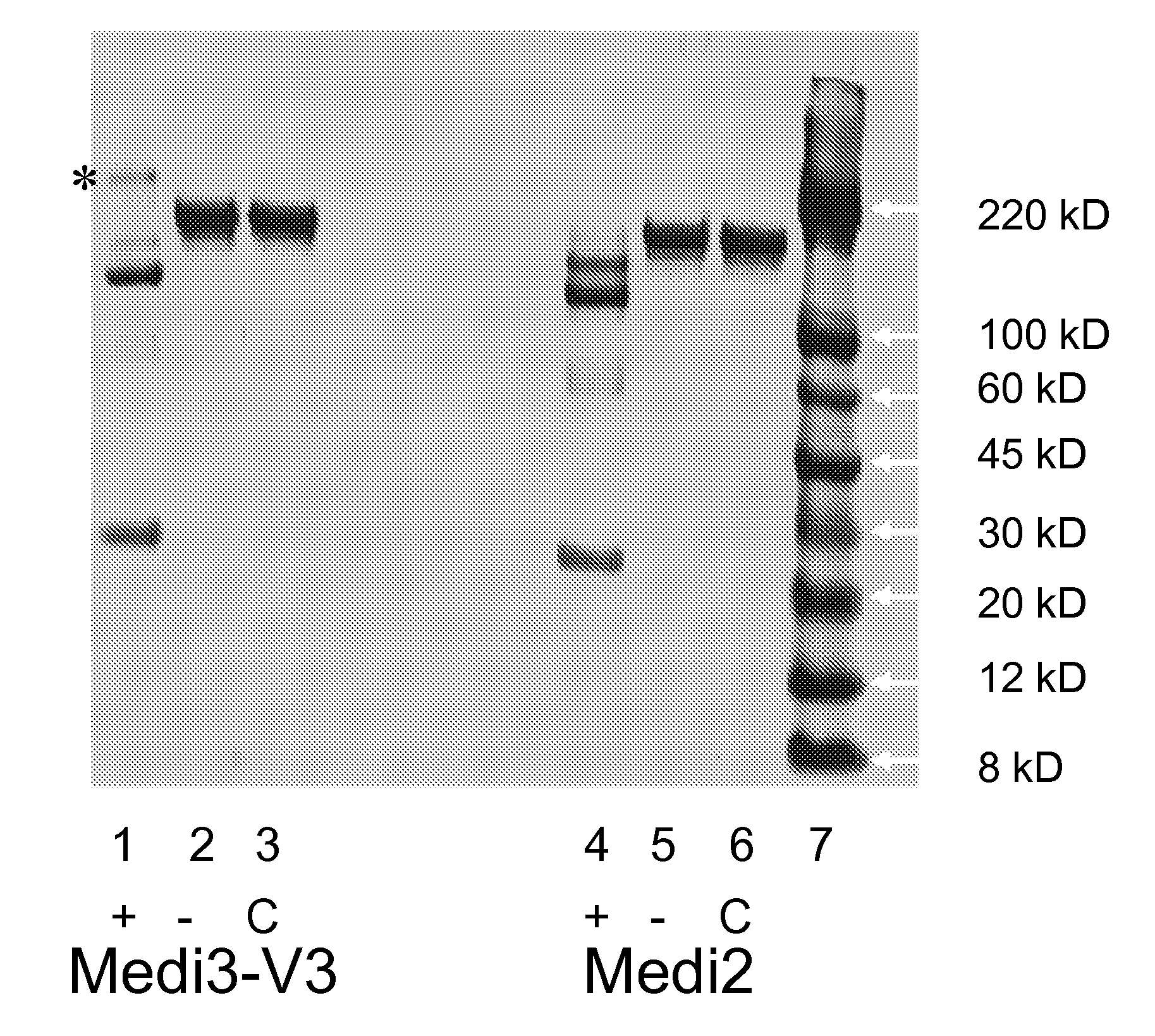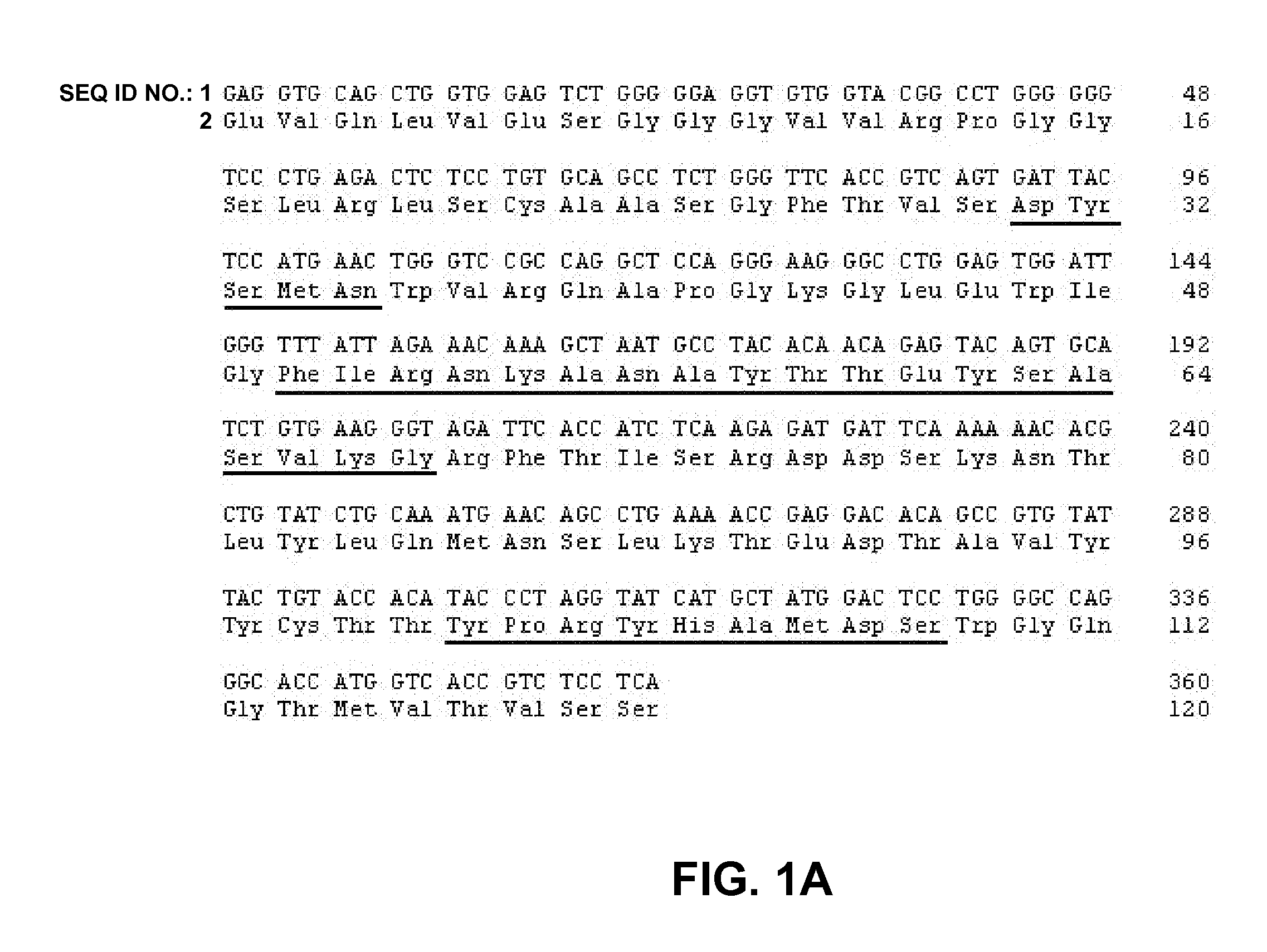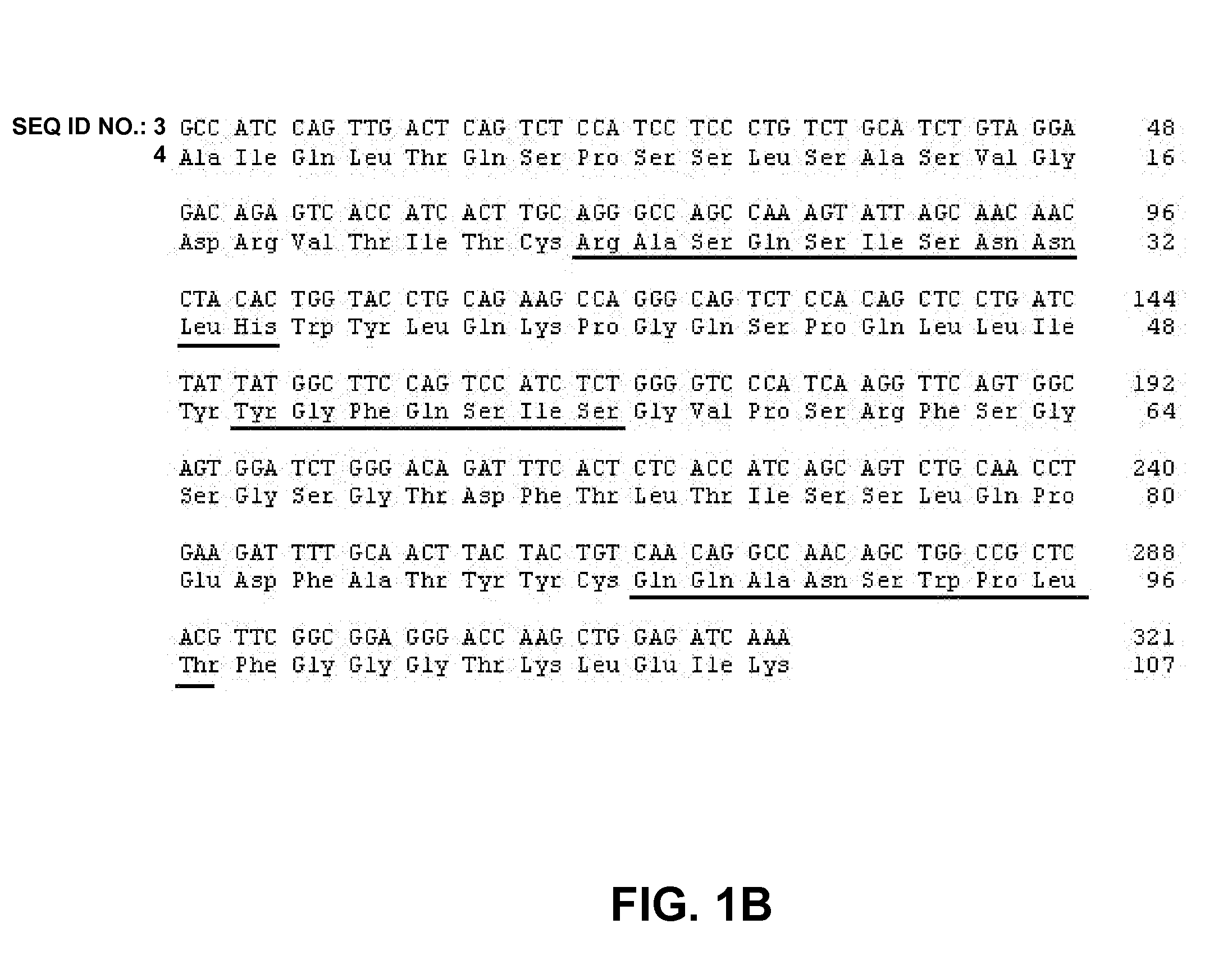Protein Formulations
a technology of protein and formulation, applied in the field of formulations, can solve the problems of reduced stability, solubility or structural integrity, and present challenges in the development of stable, high-concentration formulations, and achieve the effects of increasing the stability of said proteins, rapid aggregation, and enhancing the stability of numerous proteins
- Summary
- Abstract
- Description
- Claims
- Application Information
AI Technical Summary
Benefits of technology
Problems solved by technology
Method used
Image
Examples
example 1
8.1 Example 1
Stability Analysis of Fc Variants
[0335] Two Fc variants of an anti-EphA2 antibody (designated “Medi3”, see FIG. 1A-B for variable region, see Table 2 for SEQ ID NOS.) were generated. Variant 1 (designated “Medi3-V1”) has a glutamate at residue 332 as numbered by the EU index as set forth in Kabat, and has a binding affinity for FcγRIIIA that is 8.8 fold higher than Medi3. Variant 2 (designated “Medi3-V3”) has an aspartate at amino at residue 239, a leucine at residue 330, and a glutamate at residue 332 as numbered by the EU index as set forth in Kabat, and has a binding affinity for FcγRIIIA that is nearly 100 fold higher than Medi3 (data not shown). Medi3-V1 and Medi3-V3 also have higher ADCC activity compared to wild type Medi3, the relative ADCC activity was Medi3-3V>Medi3-1V>Medi3 (data not shown). The wild type Medi3 antibody and the Fc variants as well as a second wild type anti-Integrin αVβ3 antibody (designated “Medi2”, see FIG. 1C-D for variable region see Tab...
example 2
8.2 Example 2
Effect of Concentration and Temperature of Fc Variant Stability
[0343] The stability of Medi3-V3 formulated in 10 mM histidine buffer, pH 6.0 at several different concentrations (10, 50 and 100 mg / mL) when stored at 40° C. was analyzed by size exclusion chromatography (SEC) with UV detection (as described above) over a 37 day period and the percent of monomer present in the formulations is plotted over time (FIG. 4). The percent monomer present in the 10 mg / mL solution decreased by only about 4.4% at day 37 while the 50 mg / mL and 100 mg / mL solutions showed about a 14% and 37.5% decrease, respectively after just 14 days indicating that aggregation is increased in higher concentration solutions.
[0344] The stability of Medi3-V3 formulated in 10 mM histidine buffer, pH 6.0 at 100 mg / mL and stored at several different temperatures (4, 25 and 40° C.) was analyzed by size exclusion chromatography with UV detection over a 30 day period and the percent of monomer present in the...
example 3
8.3 Example 3
Fast Screen Assay of Buffer Formulations
[0346] A “Fast Screen” assay method was developed to rapidly screen a large number of different buffer formulations for those which improved the stability of V3 variants. Briefly, 100 mg / mL solution of Medi3-V3 in 10 mM histidine buffer, pH 6.0 was used as a monoclonal antibody (mAb) stock solution. The method utilizes concentrated excipient solutions which are added at 20% volume into an aliquot of the mAb stock solution. After excipient spiking, the protein concentration was 80 mg / mL. These excipient containing mAb solutions were incubated at 40° C. for 4-24 hours, and aggregate content was measured by SEC (as described above). The “Percent (%) Loss in Purity” (virtually the same as increase in percent aggregate) was used as an indicator to compare the stabilization imparted by excipients. A series of excipients were screened using this assay as described below.
8.3.1 Sugars and Arginine
PUM
| Property | Measurement | Unit |
|---|---|---|
| concentration | aaaaa | aaaaa |
| concentration | aaaaa | aaaaa |
| temperature | aaaaa | aaaaa |
Abstract
Description
Claims
Application Information
 Login to View More
Login to View More - R&D
- Intellectual Property
- Life Sciences
- Materials
- Tech Scout
- Unparalleled Data Quality
- Higher Quality Content
- 60% Fewer Hallucinations
Browse by: Latest US Patents, China's latest patents, Technical Efficacy Thesaurus, Application Domain, Technology Topic, Popular Technical Reports.
© 2025 PatSnap. All rights reserved.Legal|Privacy policy|Modern Slavery Act Transparency Statement|Sitemap|About US| Contact US: help@patsnap.com



